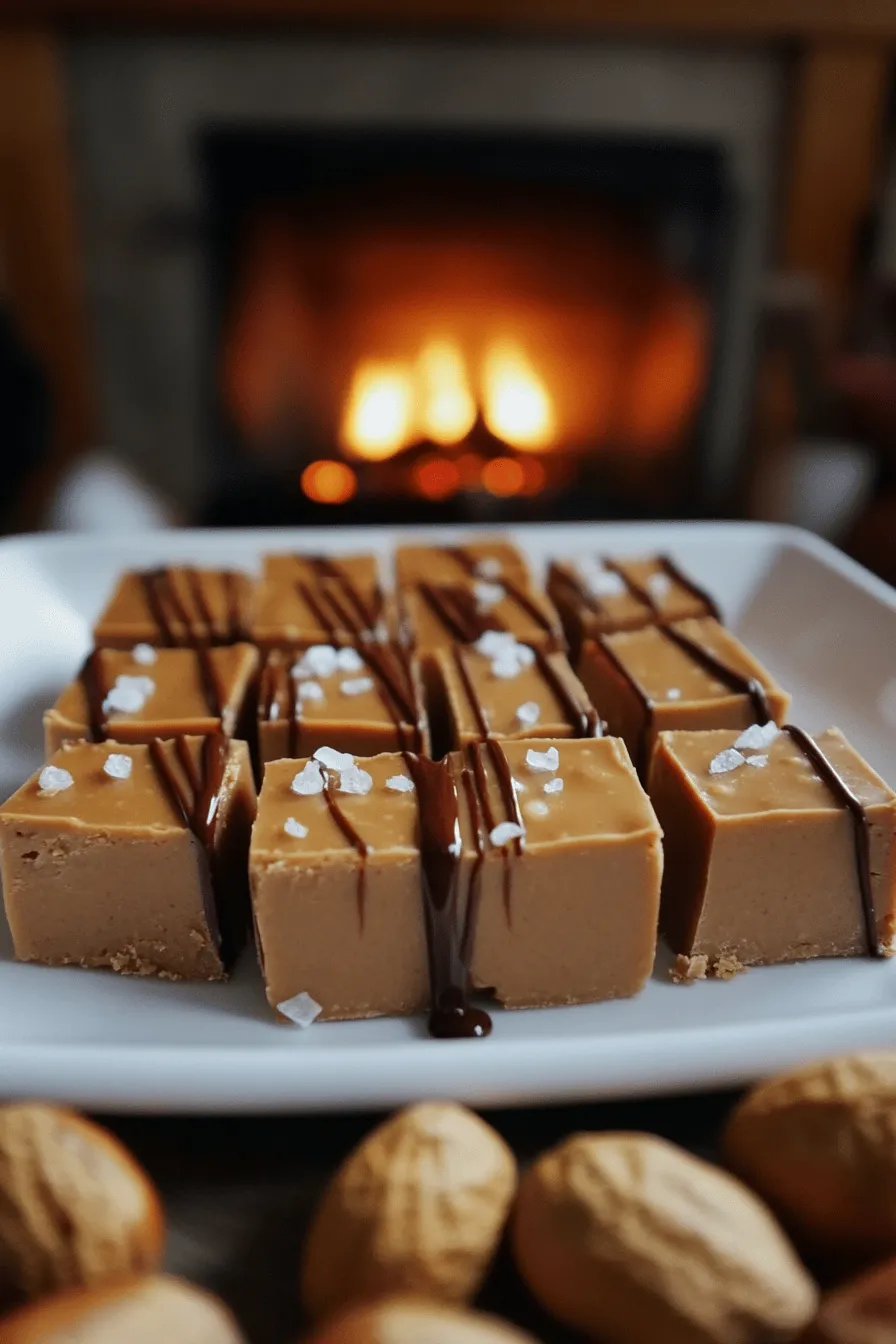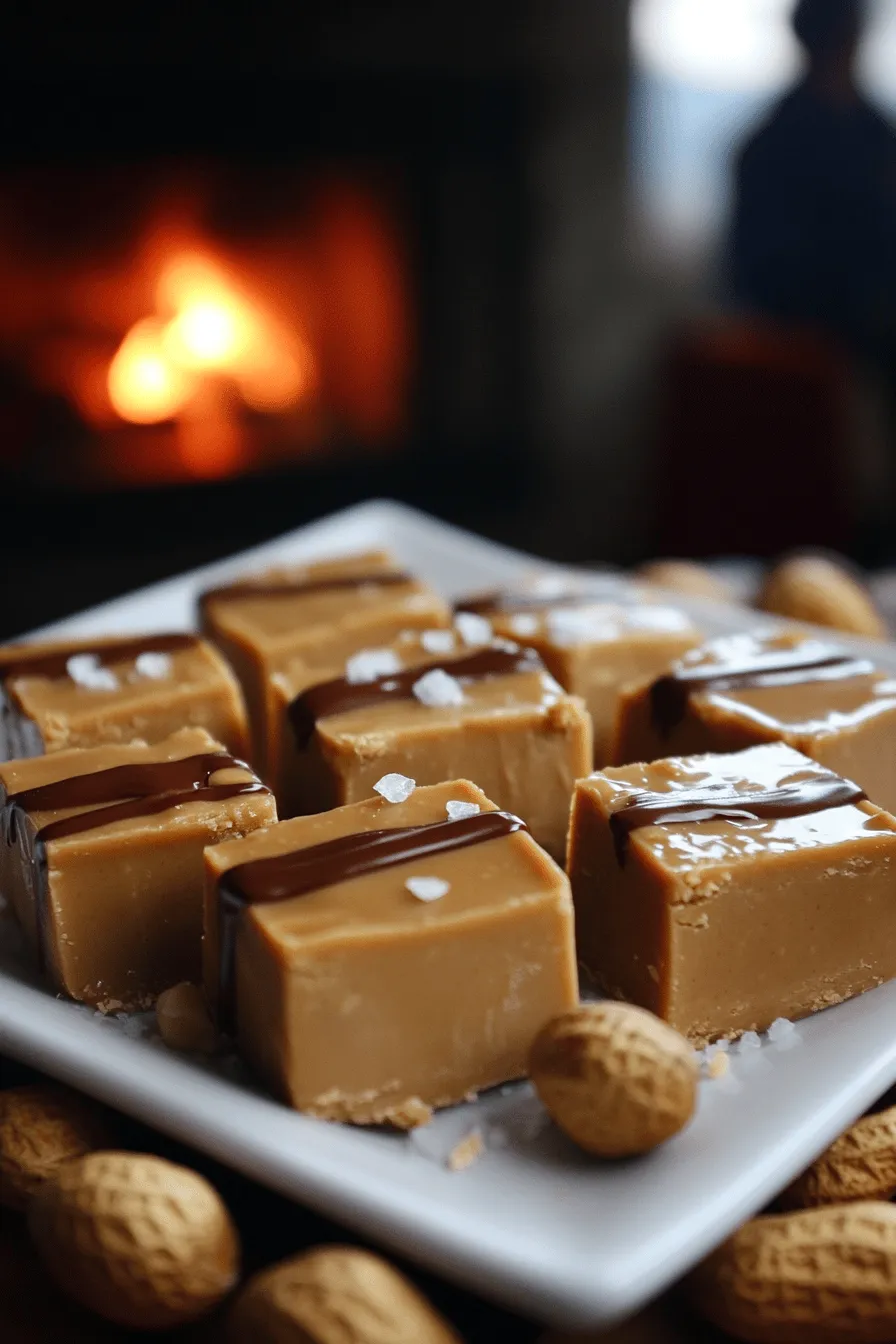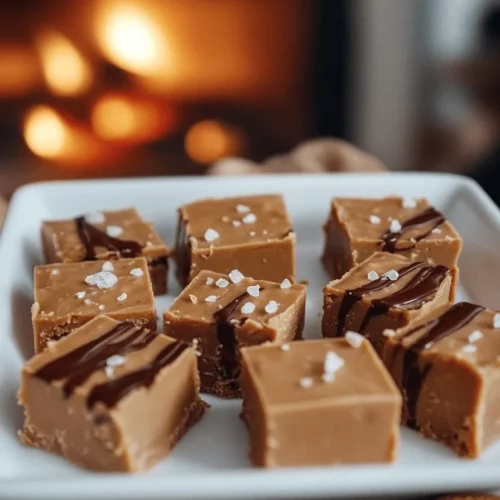Do you crave a sweet treat that’s easy and quick? Look no further than peanut butter fudge! This no-bake delight combines creamy peanut butter and chocolate, making it truly irresistible. In this post, I’ll guide you through all the tasty details, from essential ingredients to foolproof recipes and fun variations. Ready to whip up some fudge magic? Let’s dive in!
What Ingredients Do You Need for Peanut Butter Fudge?
To make peanut butter fudge, you need a few key ingredients. These include creamy peanut butter, powdered sugar, unsalted butter, vanilla extract, and milk. Each of these items plays a vital role in creating that smooth, rich taste we love.
What Are the Essential Ingredients?
The main ingredient is creamy peanut butter. It gives the fudge its nutty flavor and smooth texture. Next, powdered sugar helps sweeten the fudge and gives it that melt-in-your-mouth feel. Unsalted butter adds richness and creaminess. Vanilla extract enhances the overall flavor, while milk helps blend everything together.
Can You Use Alternative Ingredients for Fudge?
Yes, you can swap some ingredients. If you’re looking for a healthier option, try natural peanut butter. This will change the texture a bit but keep the flavor strong. For a vegan twist, use plant-based butter and a dairy-free milk. You can even use maple syrup instead of sugar for a unique taste.
How Can Ingredient Quality Impact Your Fudge?
The quality of your ingredients really matters. Fresh, high-quality peanut butter will give you a better taste. Brands with fewer additives often yield creamier fudge. Likewise, using good butter and pure vanilla extract can elevate your fudge’s flavor. Always check your ingredients before starting; it makes a big difference in your creamy fudge with peanut butter. If you want to try something special, consider adding chocolate chips for a chocolate peanut butter fudge treat. For the full recipe, check the details above.
How Do You Make Peanut Butter Fudge Step-by-Step?
What are the Basic Steps to Prepare Peanut Butter Fudge?
To make easy peanut butter fudge, start with a bowl. Combine 1 cup of creamy peanut butter and 1/2 cup of softened unsalted butter. Mix these together until smooth. Next, add 2 cups of powdered sugar slowly. Beat it in until the mixture is thick. Pour in 1/4 cup of milk and 1 teaspoon of vanilla extract. Mix until creamy. Line an 8×8 inch pan with parchment paper. Pour the fudge mixture into the pan and spread it evenly. If you want, melt 1/2 cup of chocolate chips and drizzle it on top. Sprinkle some sea salt for extra flavor. Chill the fudge for at least 2 hours. When it sets, cut it into squares.
How Can You Ensure a Creamy Consistency?
To get that creamy fudge texture, the butter must be soft, not melted. Mixing slowly helps keep air out. If you add the milk too fast, it can make the fudge grainy. Use an electric mixer to blend well, but don’t overmix. The mixture should be thick but smooth. If it seems too thick, add a bit more milk. Chilling the fudge is key to achieving the right set.
What Equipment Do You Need?
For this no-bake peanut butter fudge, you need a large mixing bowl, an electric mixer, and an 8×8 inch baking pan. A spatula helps spread the fudge evenly. You may also want parchment paper for easy removal. If you decide to melt chocolate chips, a microwave-safe bowl is handy. These simple tools make the process quick and easy, letting you enjoy your homemade treat soon. For the full recipe, check out the link.

What Variations Can You Try with Peanut Butter Fudge?
Peanut butter fudge is so much fun to play with! You can create many peanut butter fudge variations to suit your taste.
What Are Some Popular Flavor Combinations?
One popular choice is chocolate peanut butter fudge. You can mix in melted chocolate to create a rich, creamy treat. You may also try mixing in crushed cookies for a crunch. Another option is to add a touch of caramel for a sweet twist.
How Can You Personalize Your Fudge with Add-Ins?
You can add nuts like walnuts or pecans for texture. Dried fruits, such as raisins or cranberries, can add a burst of flavor. If you like spice, a pinch of cinnamon can elevate your fudge. Just remember, the sky’s the limit when it comes to add-ins!
What Unique Varieties of Peanut Butter Fudge Exist?
There are many unique varieties that can surprise your taste buds. For example, vegan peanut butter fudge is a great option. It replaces butter with coconut oil or nut butter. You can also find fudge that uses maple syrup instead of sugar for a natural sweetness.
For the full recipe, check out the Smooth & Creamy Peanut Butter Fudge. Enjoy experimenting with these fun variations!
What Tips Can Help You Achieve the Perfect Fudge?
When making peanut butter fudge, a few tips can help you get the best texture and flavor.
What Should You Watch For During the Mixing Process?
First, mix the peanut butter and butter well. It should look creamy and smooth. If you see lumps, keep mixing until it is uniform. This step is key for the fudge’s texture. Once you add the powdered sugar, the mix will thicken up quickly. Be careful not to overmix after adding sugar, as this can change the texture.
How Can You Prevent Grainy or Dry Fudge?
To avoid grainy or dry fudge, always use fresh ingredients. Old peanut butter or sugar can affect the fudge. Also, make sure to measure the powdered sugar correctly. Too much sugar can dry out your fudge. If your fudge feels too dry, try adding a bit more milk. This can help restore creaminess.
What are the Best Techniques for Cutting Fudge?
Cutting fudge can be tricky. First, let the fudge chill in the fridge for at least two hours. This step helps it set well. Use a sharp knife to cut it into squares. For clean cuts, run the knife under hot water before each slice. Wipe it dry to avoid sticking. This method will give you neat, perfect pieces.
With these tips, you can create a lovely batch of peanut butter fudge that everyone will enjoy. For the full recipe and more details, check out the Smooth & Creamy Peanut Butter Fudge recipe above.

How Do You Store and Serve Peanut Butter Fudge?
Storing peanut butter fudge is simple. First, let the fudge cool completely after making it. Then, cut it into squares. Place the squares in an airtight container. You can layer parchment paper between the squares to keep them from sticking. This method keeps the fudge fresh and easy to grab.
Peanut butter fudge lasts well in the fridge for about two weeks. If you want it to last longer, you can freeze it. Wrap each square in plastic wrap, then place them in a freezer-safe bag. Frozen fudge can last up to three months. When ready to eat, just thaw it in the fridge for a few hours.
Serving peanut butter fudge can be fun! You can serve it as a treat at parties or as a gift. Arrange the squares on a nice plate. Add a sprinkle of sea salt or some whole peanuts for a pop of color. You can also drizzle melted chocolate on top for a special touch. Peanut butter fudge makes a great gift, too! Just wrap it nicely and add a tag. Everyone loves a homemade treat. If you want to check out the recipe, look for the Full Recipe.
What are Some Nutritional Aspects of Peanut Butter Fudge?
Peanut butter fudge is a tasty treat, but it’s wise to look at its nutrition. Regular peanut butter fudge is high in sugar and fat. A typical piece packs a punch with calories. If you want a healthier snack, you can try sugar-free peanut butter fudge. This version uses sweeteners like stevia or erythritol. These options cut down the sugar without losing taste.
Peanut butter is the star of this recipe. It is rich in protein and healthy fats. These nutrients help keep you full and satisfied. Peanut butter also has vitamins and minerals, like vitamin E and magnesium. These support your overall health.
If you want to lower carbs, consider low carb peanut butter fudge. This treat uses almond flour or coconut flour. These ingredients keep the taste while reducing carbs. You can still enjoy a delicious, sweet snack without the guilt.
When making fudge, you might wonder about sweeteners. Some popular alternatives include honey, maple syrup, or agave nectar. These can change the flavor, so choose wisely. Each sweetener has a unique taste that can spice up your fudge.
For a full, tasty experience, check out the Full Recipe. It guides you to make the perfect peanut butter fudge while keeping nutrition in mind.
In this blog post, we explored how to make delicious peanut butter fudge. We covered essential ingredients and their impact on texture. I shared steps for a creamy fudge and tips for variation. You can personalize your fudge with fun add-ins or healthier swaps. Proper storage helps you enjoy your fudge longer.
Remember, making fudge can be simple and fun. Use quality ingredients, and don’t be afraid to experiment. Enjoy your homemade peanut butter fudge!







